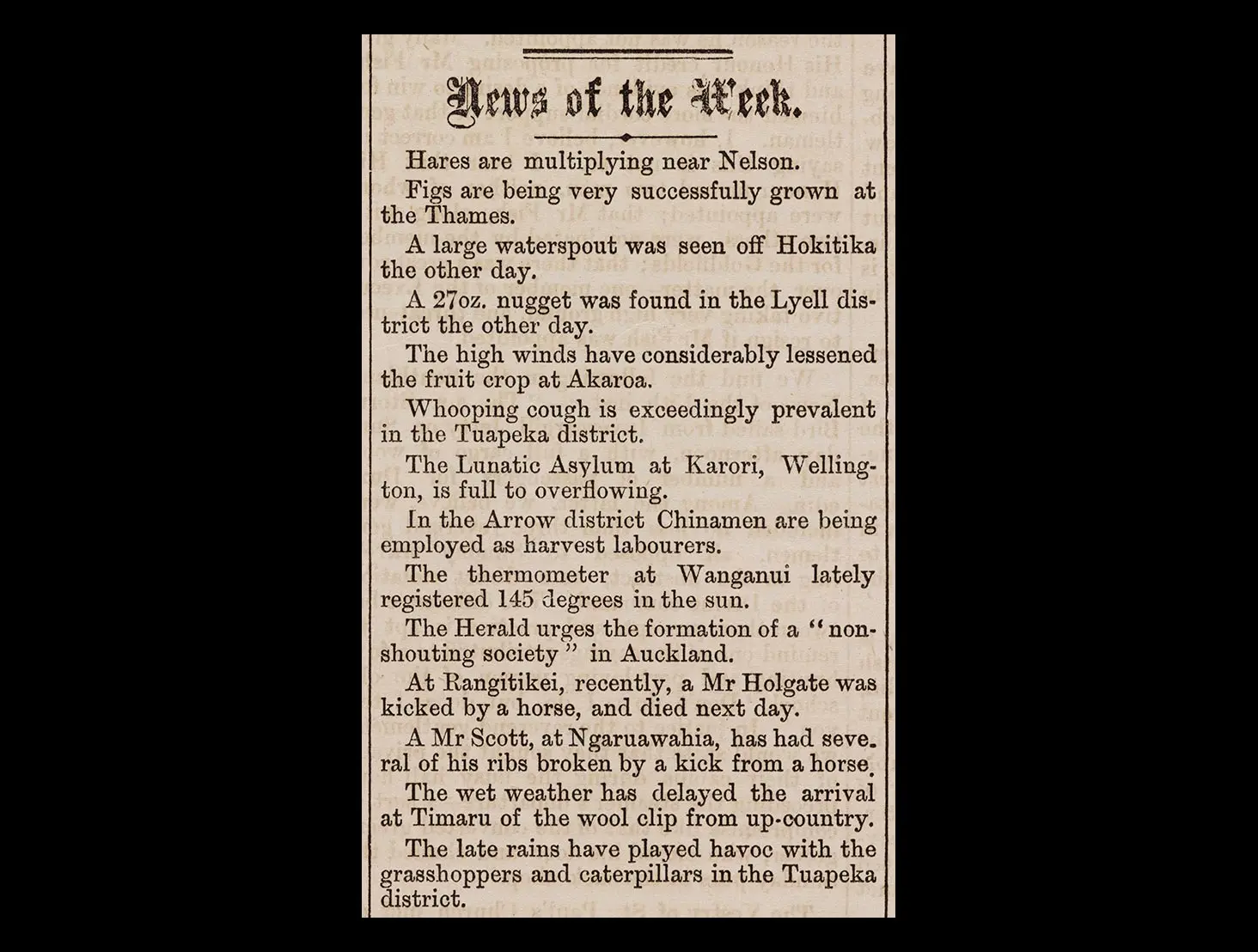Read a story about local news in colonial Aotearoa New Zealand
‘We are informed that a frog was seen on Devon Hill last week,’ the Otago Witness’s brief ‘News of the Week’ advised its readers on 22 January 1870. Long before twenty-first-century tech giants like Twitter and Instagram colonised our social media landscape, early New Zealand newspapers were doing something similar — they just used different technologies. Newspaper columns with titles like ‘News of the Week’ and ‘General Intelligence’ dispensed a digest of eclectic, pithy content — international to local, tragic to trivial. For today’s readers, they somewhat resemble a Twitter feed.
Local newspapers would take content from other published papers, then curate and publish what they thought was relevant to their readership. Sometimes, even no news was deemed newsworthy, as The Wellington Independent reported on 21 June 1864: ‘There is no local news from Otago of the slightest general interest.’
A column called ‘Telegraphic Brevities’ reinforced the crucial importance of the telegraph’s invention for colonial newsgathering and distribution. Before this, news and newspapers from overseas took months to arrive in New Zealand — even local papers and news could take weeks to reach their audience. The telegraph made it possible to send and receive national and international news in minutes; for newspapers, this was revolutionary.
New Zealand’s first electric telegraphic service connected Lyttelton to Christchurch in 1862. During the following decade, it crossed Raukawa Moana Cook Strait and then the Tasman Sea, and connected all the country’s cities and major towns.
For newspapers, the telegraph married timeliness with increased access to content. The ‘News of the Week’ example shown here carries informational snippets from all parts of the country. Pro-colonial and Anglocentric, eclectic, entertaining and occasionally sobering, columns like this captured people’s preoccupations with the weather, farming life and personal misfortune, and perhaps something of an emerging Pākehā identity.
Rediscovering this information has been made possible through the extensive digitisation of the Alexander Turnbull Library’s National Newspaper Collection. Its online delivery through the website Papers Past allows anyone to search more than 77 million articles from historical Māori and Pākehā newspapers.
As for the Otago Witness, it ceased publication in 1932, but not before it claimed two notable firsts for a New Zealand newspaper. One was to feature photographs and illustrations. And the other was to run the extraordinary ‘Dot’s Little Folk’, a decades-long social correspondence column for children and teenagers.
Story written by: Dylan Owen
Copyright: Turnbull Endowment Trust
Find out more
Explore the Alexander Turnbull Library collections further:
Topic Explorer has Colonial life in New Zealand.
Many Answers has:
Want to share, print or reuse one of our images? Read the guidelines for reusing Alexander Turnbull Library images.
Curriculum links
